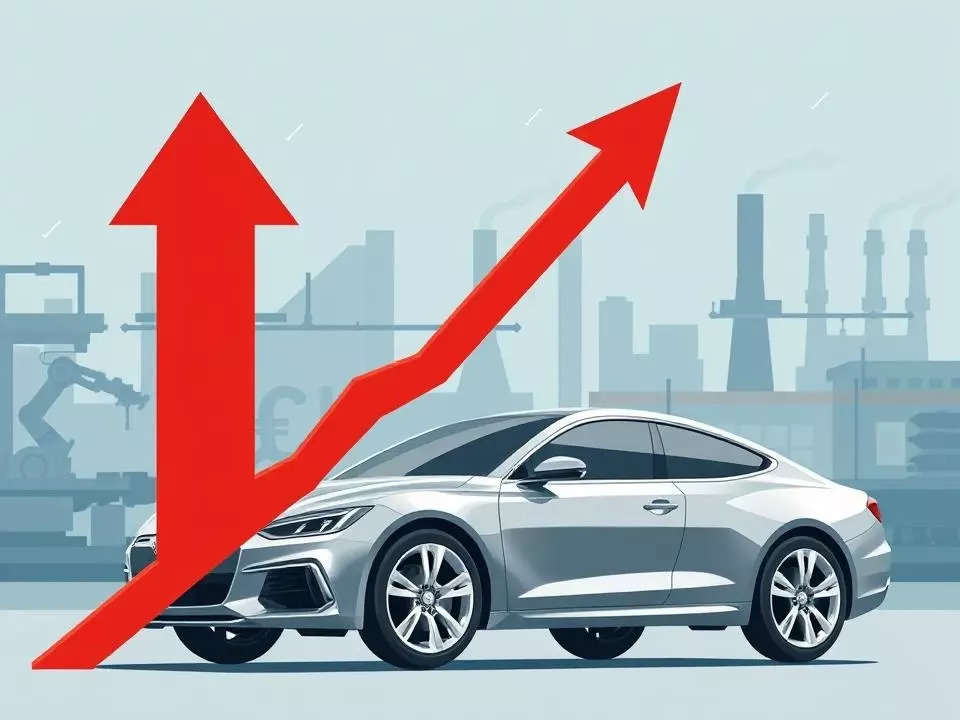Car Prices Rise From April 1: Check New Rates & Discounts

As the new financial year begins, several automobile manufacturers in India have increased the prices of their models. Rising input costs and economic pressures have prompted automakers to implement price hikes, some of which mark the second or third increase within a few months. While this move aims to offset higher production expenses, car buyers must now navigate a more expensive market.
Automakers Implement Price Increases Across Segments
Maruti Suzuki was among the first to announce price revisions, with hikes of up to 4% depending on the model and variant. Popular models such as the Baleno, Alto K10, Swift, Dzire, Brezza, and Grand Vitara are among those affected. Tata Motors has also raised prices by up to 3%, impacting models like the Nexon, Tiago, and Curvv, including their electric variants. Luxury brands such as BMW, Hyundai, and Mercedes-Benz have implemented price hikes of up to 3%, while MG Motor and Stellantis (Jeep and Citroën) have opted for more moderate increases of around 2%.
Why Are Car Prices Increasing?
Several factors contribute to the latest wave of price hikes in the automobile sector
- Rising Manufacturing Costs: Higher costs for raw materials such as steel, aluminium, and rubber have significantly impacted production expenses. Steel prices have surged by over 10% year-on-year, while rubber costs have risen by approximately 27%.
- Currency Depreciation: The Indian rupee’s depreciation against the US dollar has led to increased costs for imported components, further pressuring manufacturers.
- Higher Logistics and Energy Costs: Rising fuel and transportation expenses have added to the overall cost burden for automakers, compelling them to adjust vehicle prices accordingly.
Global economic fluctuations, supply chain disruptions, and trade tariffs have also played a role in the rising cost of vehicles. Although tariffs imposed by foreign economies have limited direct impact on Indian automakers, the global supply chain remains under strain. Manufacturers are now reassessing their sourcing strategies and production plans to mitigate further risks and maintain stable operations.
Discounts and Dealer Offers on Entry-Level Cars
Despite the upward trend in car prices, dealerships are offering discounts on entry-level models to boost sales. The Federation of Automobile Dealers Associations (FADA) has reported a decline in passenger vehicle sales, particularly in rural markets where inflation and economic uncertainty have dampened consumer sentiment. As a result, dealers are rolling out incentives such as cash discounts, exchange bonuses, and special financing options.
For instance, buyers of entry-level cars like the Maruti Suzuki Alto K10, S-Presso, and Celerio can avail discounts of up to Rs 40,000. Other manufacturers, including Citroën, are also offering attractive deals on models such as the C3, while brands like Honda and Mahindra have introduced discounts ranging from Rs 2,500 to Rs 75,000 on select vehicles.
Opportunities for Savvy Buyers
In addition to direct cash discounts, some brands are providing exchange offers and scrappage bonuses to encourage new purchases. Mahindra, for example, is offering discounts of up to Rs 3 lakh on models like the Thar Roxx, which remains in high demand. Buyers looking for value can negotiate better deals on leftover stock from the 2024 model year, as dealerships aim to clear inventory and boost sales at the beginning of the financial year.
While car prices are on the rise due to increased manufacturing costs and economic factors, buyers can still find opportunities to save through discounts and exchange deals. The evolving market dynamics reflect the ongoing challenges in the automotive industry, but informed consumers who negotiate strategically can still secure competitive pricing. As manufacturers strive to balance costs and maintain sales momentum, the coming months will be crucial in determining the impact of these price adjustments on overall vehicle demand.